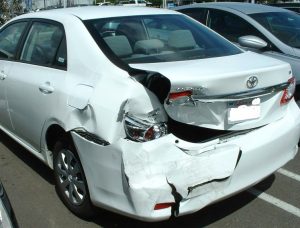Car insurance provides peace of mind on the roads. It saves you the financial hassle of having to pay for damages to your car or other people’s property during an accident, especially when you are at fault. However, insurance companies offer this financial protection for profit. The higher the risk that they cover, the more you pay.
You can save some cash by lowering the amount of risk the insurer bears. One of the ways to achieve this is through car insurance deductibles.
What is Auto Insurance Deductible?
A car insurance deductible is the amount of out-of-the-pocket payments you agree to make towards repairs before the insurance provider pays for the damages. Take, for example, having a deductible amount of $200. If your damages cost $500, you will pay the $200 then the insurance company will settle the remaining $300.
Where Does It Apply?
Car insurance cover is subdivided into several multiple policies. Not all of them have deductibles. Liability insurance, which covers property damages and bodily injuries, does not offer deductible. They only apply to two types of coverage.
- Comprehensive Policy: It covers all the possible damages to your car for which you are not responsible. The instances include trees falling on the cars, damages by hail or any other costs, details here.
- Collision Policy: It only covers damages to the vehicle during an accident. The crash may involve a stationary object or another car. This coverage only takes care of the cost of repairing your vehicle. It does not bear the liability for third-party damages such as the damages you cause to other cars or another person’s property. Find more details on this post.
How It Works And Its Benefits
The underlying principle in the working of a car insurance deductible is the fact that you pay it before the insurance funds the remaining portion. For example, if your car has repairs amounts up to $ 1000, and your deductible is $500, you first pay the deductible then the insurance pays the rest. Therefore, if your repairs cost $400, you will pay the entire amount, and your insurer will not pay a dime towards the repairs.
It is worth pointing out that the deductible applies per claim basis. That is, if you had four different repairs that cost $500 each, for example, you would pay all of them. Your insurance would have provided you zero coverage as you have taken 100 percent liability.
Benefits of a Car Insurance Deductible
Having a deductible on your car coverage lowers your premium rates. This is because, the higher the amount of coverage, the higher the risk. Insurance premiums are directly promotional to the level of risk. As a result, high-risk covers attract high insurance rates.
A deductible reduces the liability which the insurer bears. Consequently, the amount of premium they charge decreases. The higher the deductible amount, the lower the rates, and vice versa.
When to Pay an Insurance Deductible
You only pay a deductible for repairs to your car, not another. Again, this is only when you are the one at fault during an accident or under a comprehensive cover. When the accident involves another vehicle, and the other driver is the one at fault, then their insurance company should cover the damages. In case both of you are at fault, you share the cost of the repairs, and you may only pay part of the deductible.
You can also not pay for the deductible when you choose not to repair the vehicle. This is usually the case when you think the damages are not worth fixing. In such a circumstance, the insurance company will service your claim by writing you a check for the total amount the repairs would cost less the deductible.
Factors to Consider When Choosing a Deductible
Three critical factors are worth considering before you choose a deductible plan.
Ability to Pay
Deductibles range from $100 to as high as $2000. You should choose an amount which you can comfortably pay without digging yourself into a financial sinkhole. You should not fail to repair your car because you cannot afford your part of the cost. Again, remember that the insurance only pays after you have settled your part.
Some of the factors that determine your ability to settle your deductible include; your income, level of credit, financial plans and household budget. It is meaningless to save on insurance premiums at the expense of peace of mind and necessities.
Frequency of Accidents
How often will your car be involved in accidents? You driving history should provide some clue on how often you get into the accident. If you have no history to refer to, then the driving environment can offer some insights. The frequency of fender benders is high on busy highways. Nevertheless, since you do not know what to expect on the roads, a low deductible plan is the appropriate option.
If you have a high accident rate, then the number of claims will be high. It implies that you will pay more deductibles. In such a case, you should take a low deductible plan. Otherwise, save some money by opting from high deductibles.
The Average Cost of Repairs
You can get this information from your accident history or the policy provider. If the average price of repairs is $1000, for example, then taking a deductible of $1000 will make the insurance coverage unnecessary.
Conclusion
Auto insurance deductible offers an excellent way of saving money. Fortunately, most car insurance providers allow for this option. You can opt for any deductible amount; only ensure you can afford it without significantly disrupting your lifestyle, savings and credit levels.



